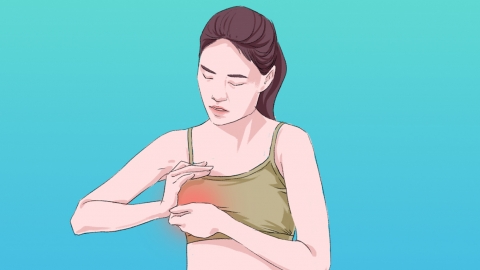What are the symptoms of breast neurofibroma?
Generally, as a benign tumor originating from the breast nerve tissue, breast neurofibroma commonly presents symptoms including localized breast mass, palpation characteristics of texture, associated pain or numbness, mobility of the mass, and changes in the skin surface. The details are as follows:

1. Localized breast mass: The tumor often presents as an isolated mass within the breast, commonly located in the areolar region or the upper outer quadrant of the breast. Its size is usually around 1-3 centimeters, and it grows slowly without rapid enlargement in a short period. The mass is usually round or oval, with a regular shape, clear boundaries from surrounding tissues, and can be easily detected by touch.
2. Palpation characteristics: When touching the mass by hand, one may feel a soft or medium-hard texture, similar to the sensation of touching rubber. Pressing the mass does not produce a distinct feeling of hardness or uneven texture, nor does the shape of the mass change significantly due to pressure.
3. Accompanying pain or numbness: Some patients may experience mild pain around the mass, mostly presenting as dull or sharp pain. The pain is mild and irregular, occasionally occurring after emotional fluctuations or physical fatigue. A few patients may feel numbness in the skin area of the mass due to tumor compression of surrounding nerves, with reduced sensitivity upon touch.
4. Mobility of the mass: The mass is not tightly adhered to the breast glandular tissue, and it is mobile when pushed manually, allowing slight movement within the breast. It does not become fixed or adhere to deep tissues when pushed, a characteristic that helps differentiate it from malignant tumors.
5. Skin surface changes: The tumor generally does not invade the breast skin, so the skin color over the mass remains normal, without redness and swelling, ulceration, or orange peel-like changes. A few larger tumors may cause slight skin elevation in the local area, but the skin surface remains smooth, intact, and free of abnormal discharge.
Patients are advised to perform regular breast self-examinations to monitor changes in the size and shape of the mass, and to avoid forcefully squeezing or kneading the mass. Maintaining a regular lifestyle, minimizing emotional fluctuations, choosing loose and comfortable undergarments, and avoiding excessive pressure on the breast area can help maintain breast health.




